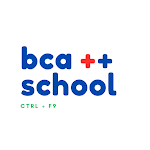Introduction of Logic & Basics of Algorithm – BCA Notes
Logic and Algorithm are the foundation of every computer program. Before learning any programming language, every BCA student must understand how logic is built and how algorithms help to solve problems step by step. In this post by BCA School, you’ll learn the concept of logic, algorithm, and how to write algorithms with examples.

🔹 What is Logic?
Logic is the process of thinking systematically to solve a problem. In programming, logic defines the sequence of steps that leads to the desired output. It uses reasoning — like if-else conditions, loops, and decisions — to control the program flow.
Example of Logic:
To find the largest of two numbers, our logic says:
- Compare the first number with the second number.
- If the first is greater, print it as the largest.
- Otherwise, print the second number.
🔹 What is an Algorithm?
An Algorithm is a step-by-step method of solving a problem. It is a set of finite instructions written in a specific order to get the desired result. Every program we write is based on an algorithm.
Example of an Algorithm:
Algorithm: Find the sum of two numbers Step 1: Start Step 2: Read two numbers A and B Step 3: Add A and B and store in SUM Step 4: Display SUM Step 5: Stop
🔹 Characteristics of a Good Algorithm
- Finiteness: Must complete after a finite number of steps.
- Definiteness: Each step must be clear and unambiguous.
- Input: Must have 0 or more inputs.
- Output: Must have at least one output.
- Effectiveness: Each step must be basic and feasible.
🔹 Difference Between Logic and Algorithm
| Logic | Algorithm |
|---|---|
| It is the overall idea or reasoning behind a program. | It is the step-by-step procedure to implement that logic. |
| Logic focuses on *what* to do. | Algorithm focuses on *how* to do it. |
| Logic is created first. | Algorithm is written after logic is finalized. |
🔹 Example Problem: Find the Area of a Circle
Algorithm: 1. Start 2. Read the radius of circle (r) 3. Compute area = 3.14 * r * r 4. Display area 5. Stop
🎯 Conclusion
Understanding logic and algorithms is the first step toward becoming a good programmer. Once you learn to build logical thinking and convert it into algorithms, learning any language like C, Python, or Java becomes much easier. Keep practicing small problems daily to improve your logical skills!

